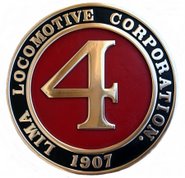While the primary goal of the work day was to ensure safe passage of rail equipment through the old Tunnel No. 1 cut, project leader Keith Berry also wanted to repair a washout that threatened the rail to the west of the cut. To facilitate passage on the existing hiking and mountain bike trail adjacent to the tracks, the crew built a trail crossing over the repaired drainage ditch.
The crossing was built in a manner reminiscent of the many trails in the Sierra Nevada. Like a rock and dirt bridge built over a small mountain creek, the crew skillfully laid a rock foundation over an eight-inch steel culvert pipe. Then a car-load of fill dirt from the cut was brought down the rail line to complete the rock and dirt bridge.
This series of photographs chronicles the work at the washout site on Saturday.
 Volunteers unload rocks from the push car into the gully. The crew laid a 10-foot line of rocks in the gully. The rocks will prevent rushing water from cutting into the rail bed during heavy rain storms. Bill Wilde, Alex Wilde, Hank Stiles, Keith Berry and Jacob Karoly unloaded the push car in about 15 minutes.
Volunteers unload rocks from the push car into the gully. The crew laid a 10-foot line of rocks in the gully. The rocks will prevent rushing water from cutting into the rail bed during heavy rain storms. Bill Wilde, Alex Wilde, Hank Stiles, Keith Berry and Jacob Karoly unloaded the push car in about 15 minutes. Bill, Alex and Hank represented the FEDS on the project. The FEDS also donated use of its Fairmount A-6 speeder and push car for the day. The A-6 provided the mechanical muscle on the rail to move carloads of rock and fill dirt from the cut to the washout. The speeder also ferried six of the 15 project volunteers from the staging point in Shingle Springs to the project site. Hank Stiles operated the speeder throughout the day.
 Alex Wilde throws a large rock into the trench. Around four or five carloads of rock were hauled from the Tunnel No. 1 cut to the washout site. The project site is located about one-half mile west of the cut.
Alex Wilde throws a large rock into the trench. Around four or five carloads of rock were hauled from the Tunnel No. 1 cut to the washout site. The project site is located about one-half mile west of the cut. Ed Cunha catches a cantaloupe-sized rock. While it appears that Ben Cunha propelled the rock at his father with the flat-head shovel, Keith Berry actually tossed the rock at Ed from the left of the camera.
Ed Cunha catches a cantaloupe-sized rock. While it appears that Ben Cunha propelled the rock at his father with the flat-head shovel, Keith Berry actually tossed the rock at Ed from the left of the camera. Alex Wilde and Hank Stiles rolled a very large rock from the side of the push car down into the trench.
Alex Wilde and Hank Stiles rolled a very large rock from the side of the push car down into the trench. Crew make up changed each time a new load of rocks or fill dirt was brought down the rails to the washout point. The last crew of the day consisted of, left to right, Hank Stiles, Keith Berry, Ben Cunha, Ed Cuhna, Alex Wilde, Bill Wilde and Bill Bellas. Photographer Steven Karoly documented the project.
Crew make up changed each time a new load of rocks or fill dirt was brought down the rails to the washout point. The last crew of the day consisted of, left to right, Hank Stiles, Keith Berry, Ben Cunha, Ed Cuhna, Alex Wilde, Bill Wilde and Bill Bellas. Photographer Steven Karoly documented the project.At the end of the day, Hank drove the Fairmount speeder west toward Mile Post 137 at Shingle Springs. We saw two men on mountain bikes making their way along the track just east of the Shingle Springs Road grade crossing. The cyclists were going to be the first to use the new trail crossing at the washout.
Saturday evening Ed Cunha emailed me with this note: "When we got back to El Dorado some mountain bikers came by and said that they had used the new crossing that we put in, and thanked us for the work."


1 comment:
Steven-
Great photos and article! You guys did an incredible job! Wish I could have been there with you but brush clearing on the line near Latrobe was calling my name. Thanks also goes out to FEDS members Marcus Ferril, Jim Fryer, Philip Rose, and Ray Retalick for work completed that same day to clear brush from MP 123.6 to the first grade crossing of South Shingle Road east of Latrobe.
Eric
FEDS
Post a Comment